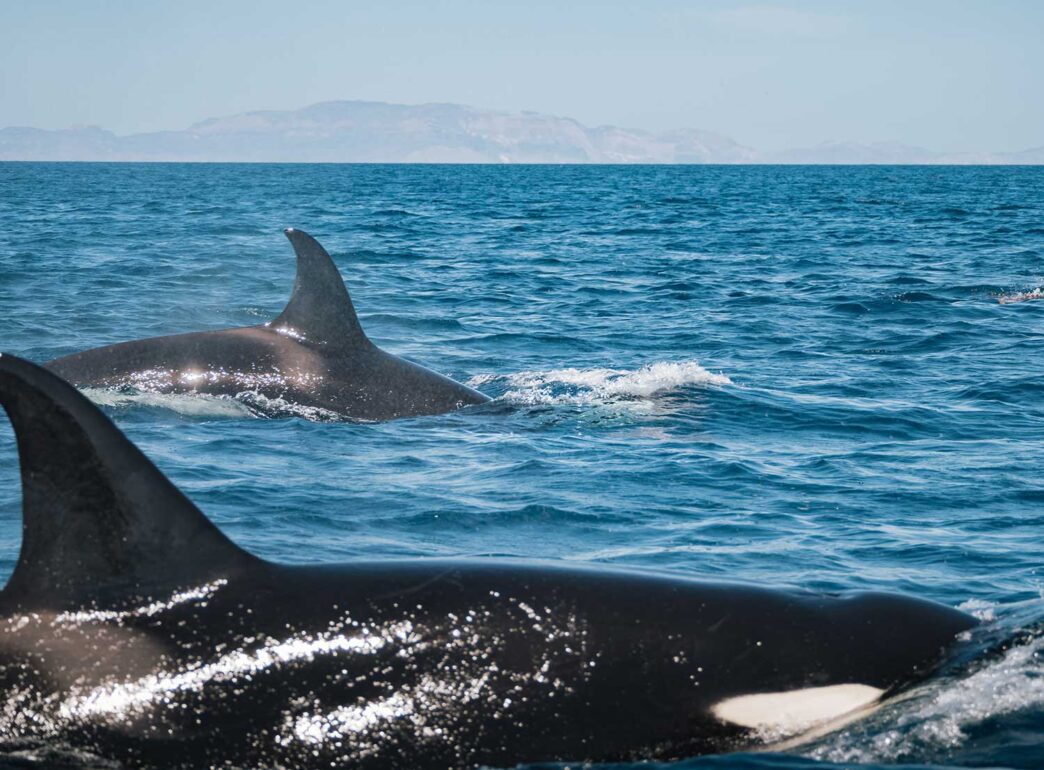A community meeting on July 30 in La Ventana, just two days before a new orca tourism management plan took effect, turned into a protest as local tour operators voiced frustration over federal restrictions.
Captains, guides, and tourism providers gathered with Natalia Rulfo, Municipal Director of Tourism, and SEMARNAT officials to discuss the “Pilot Management Plan for Watching and Swimming with Orcas.” Instead, the event became a platform for complaints about limited access, unclear permitting rules, and a lack of local input.
One major grievance was the plan’s claim that it was created “at the express request” of La Ventana, El Sargento, and Agua Amarga communities. Several captains disputed this. “That’s a lie,” said a captain from Agua Amarga. “We were told to join or risk losing our permits. And now the approved area doesn’t even cover where we’ve always worked.”
Under the plan, orca tourism is limited to 24 vessels per day, from August 1, 2025, through July 31, 2026. The designated operating area has also raised concerns.
“The area is too small,” said Efraín Geraldo, a La Ventana-based captain. “Orcas don’t stay still like whale sharks. In an hour, they’ve already left the zone.”
He and others argued the range and the four-hour daily tour limit don’t reflect real conditions or the operators’ experience. The risk of sanctions for following orcas beyond the defined zone adds further pressure.
Tour operators also criticized the lack of guarantees that locals will receive priority for permits. With only a limited number issued, they fear outsiders will benefit instead.
“How can they give permits to people who’ve never fished or worked here?” asked Efraín, who estimated that at least 39 local captains could meet demand. “We have boats, and many fishermen want to switch to tourism. There’s a lot of potential.”
A speaker from Agua Amarga added, “We gave up fishing to protect the sea. Now they’re shutting us out. If this continues, we may go back to our nets.”
Cristina González, head of SEMARNAT in Baja California Sur, acknowledged the discontent and promised to send community concerns to the General Directorate of Wildlife.
“This is not a final plan. It’s a pilot,” González said. “We’re open to adjustments and to working closely with those who felt excluded.”
She emphasized that she lacks the authority to halt the plan, published July 24, but said revisions are possible, including to the operating area.
Despite tensions, the meeting left a path open for dialogue. “We’ll work hand in hand with the community,” González said. “This plan must benefit those who live here.”
As the orca season begins, operators in La Ventana and Agua Amarga remain firm in their demands: local permits, fair boundaries, and recognition of their experience.
This is the first plan of its kind in Mexico and Latin America to regulate swimming and watching orcas. Issued by SEMARNAT, it establishes safety protocols, approach distances, and daily vessel limits in a region known for seasonal orca activity.




Are the restrictions for getting to close like they do with the whales i see it daily on my rooftop how they swarm in on the whales makes me so sad .